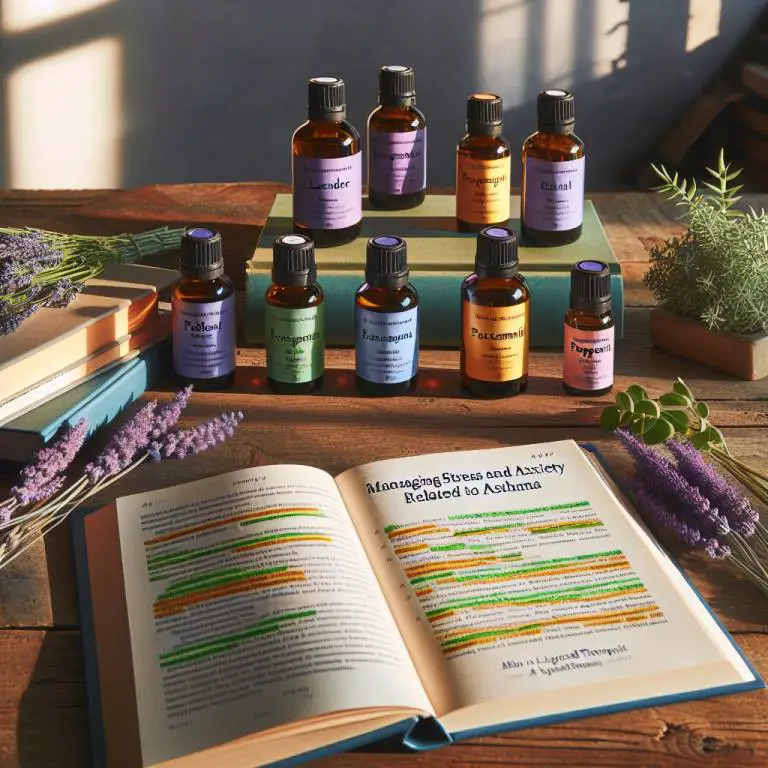How to create an essential oil inhaler for asthma relief
To create an essential oil inhaler for asthma relief, start by getting a blank inhaler. Next, add 15-20 drops of your chosen essential oil, like peppermint or eucalyptus, to the inhaler’s cotton wick. Then, assemble the inhaler by placing the wick inside and capping it tightly. This portable solution can help manage asthma symptoms on-the-go.

What Are the Benefits of Using an Essential Oil Inhaler for Asthma Relief?
Using an essential oil inhaler for asthma relief can offer several benefits. One major advantage is the natural approach it provides, avoiding the need for synthetic medications and their potential side effects. Essential oils are known for their soothing properties, which can help relax the airways and reduce inflammation, making breathing easier for those with asthma.
Another benefit is the convenience and portability of essential oil inhalers. They are small, easy to carry, and can be used anywhere, providing immediate relief when asthma symptoms start to appear. This makes managing asthma symptoms more manageable, especially when on the go or away from home.
Which Essential Oils Are Most Effective for Asthma Relief?
Several essential oils are recognized for their effectiveness in providing relief from asthma symptoms. Peppermint oil is one of them; it contains menthol, which helps soothe the bronchial muscles and promotes easier breathing. Eucalyptus oil is another popular choice due to its cineole content that has anti-inflammatory properties and helps clear mucus from the airways.
Lavender oil is also beneficial for asthma sufferers because of its calming effect on the body, reducing stress and anxiety that can trigger or worsen asthma attacks. Frankincense oil has been noted for its ability to reduce inflammation in the airways, making it another effective option for easing asthma symptoms.
Find out how essential oils can aid lung function. Learn about the top oils for breathing and their safe use.
What Materials Do You Need to Create an Essential Oil Inhaler?
To create your own essential oil inhaler for asthma relief, you’ll need a few basic materials. The most important component is a blank inhaler tube; these usually consist of a plastic outer shell, a wick to absorb the essential oils, and a cap to keep everything contained. You will also need pure essential oils of your choice based on their benefits for asthma relief.
In addition to these primary materials, having a small bowl or container to mix your essential oils before soaking the wick is helpful. A pair of tweezers might also be useful to handle the wick once it’s soaked with oils. With these simple tools and materials, you’re ready to assemble your own inhaler.
How Can You Assemble a Basic Essential Oil Inhaler for Asthma?
Assembling a basic essential oil inhaler starts with adding your chosen essential oils into a small bowl or container. Aim for about 15-20 drops in total; this could be just one type of oil or a blend of several depending on your preferences and needs. Once you’ve added the oils, carefully place the wick into the mixture ensuring it’s fully saturated with the oils.
Next, using tweezers or clean fingers, remove the wick from the bowl and insert it into your blank inhaler tube. Once inserted securely at the bottom of the tube, snap on the bottom plug to seal it in place. Finally, cap off your inhaler – it’s now ready to use whenever you need relief from your asthma symptoms.
| Step | Instructions | Materials Needed |
|---|---|---|
| 1 | Gather all materials. | Blank inhaler, essential oils (eucalyptus, peppermint), pipette or dropper |
| 2 | Add essential oils to the cotton wick. | 15 drops eucalyptus oil, 10 drops peppermint oil, cotton wick |
| 3 | Insert the cotton wick into the inhaler tube. | Cotton wick, inhaler tube |
| 4 | Snap the bottom plug onto the tube. | Inhaler tube, bottom plug |
| 5 | Screw on the cap tightly. | Inhaler cap, inhaler tube with inserted wick and plug |
How Can You Customize Your Essential Oil Inhaler Blend for Maximum Benefit?
Customizing your essential oil inhaler blend allows you to target your specific needs. Start by identifying which symptoms are most bothersome. For example, if you struggle with tightness in the chest, eucalyptus and peppermint oils can offer relief due to their menthol content, which helps in opening airways.
To enhance the calming effects, consider adding lavender or chamomile oil. These oils are known for their ability to reduce anxiety and promote relaxation, making them excellent additions for nighttime use. Remember, the key is to experiment with different combinations while keeping track of how each blend affects your symptoms.
What Safety Precautions Should Be Considered When Using Essential Oils for Asthma?
When using essential oils for asthma relief, it’s crucial to remember that safety comes first. Always dilute essential oils properly before use. Direct application or inhalation of concentrated oils can irritate the airways further, potentially worsening asthma symptoms.
Additionally, it’s important to conduct a patch test before fully incorporating a new oil into your routine. This involves applying a small amount of diluted oil to the skin and waiting 24 hours to check for any adverse reactions. If you experience difficulty breathing, itching, or other signs of an allergic reaction after using an essential oil, discontinue its use immediately and consult a healthcare provider.
How Often Should You Use Your Essential Oil Inhaler for Asthma Relief?
The frequency of use for an essential oil inhaler can vary depending on individual needs and responses. As a general guideline, using the inhaler at the onset of asthma symptoms or when you anticipate being exposed to triggers can be beneficial.
However, it’s also important not to overuse the inhaler. Overuse can lead to desensitization to the effects of the oils or even irritation of the airways. Monitoring how your body responds and adjusting usage accordingly is key. If unsure about how often you should use your inhaler, consulting with a healthcare professional who is knowledgeable about both asthma and aromatherapy is advisable.
Final Thoughts
Incorporating an essential oil inhaler into your asthma management plan can offer additional relief from symptoms when used correctly. Customizing blends according to personal needs and preferences allows for targeted relief that complements traditional treatments.
However, it’s vital to approach this complementary therapy with caution by adhering to safety guidelines and consulting healthcare professionals as needed. With careful consideration and proper use, essential oils can be a valuable tool in achieving better asthma control.






